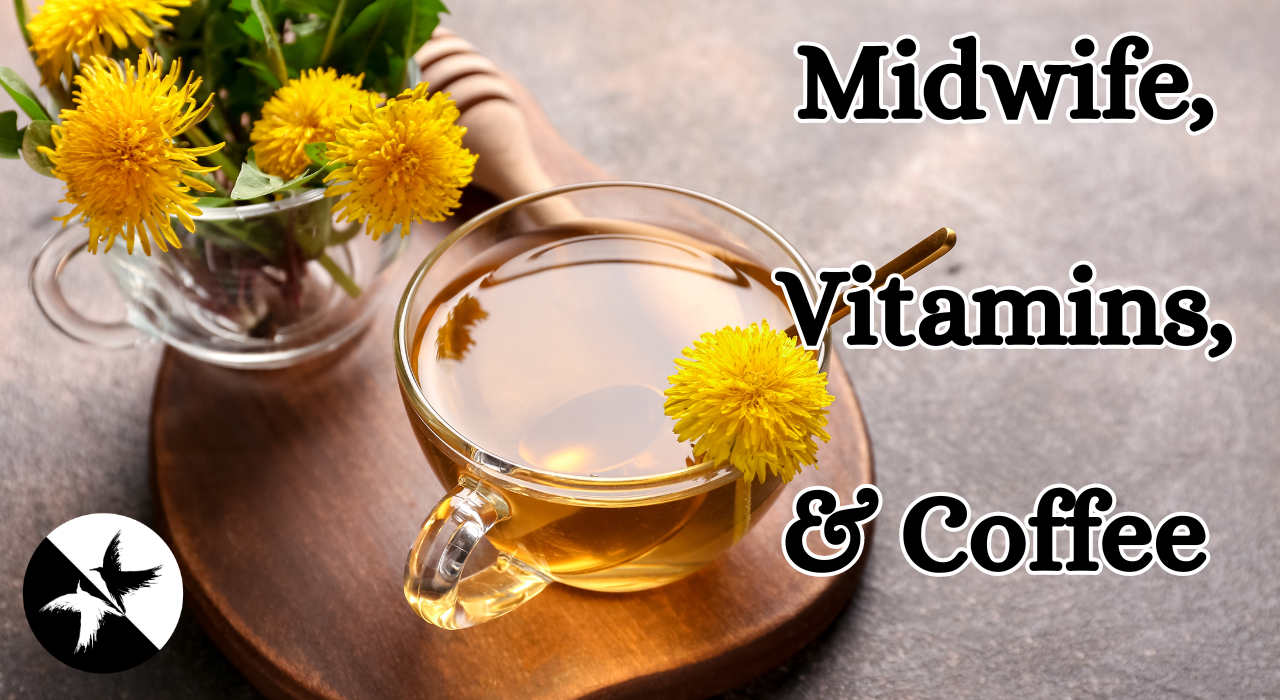What parts of dandelions can your character eat? What disease might dandelions help sailors with? When were dandelions used as a food source in history? How could dandelion tea help your female characters? What do restaurants have to do with dandelions? Find out on this episode.
Welcome to Writing Rural with Alley, the fiction writer’s weekly inspiration station for rural life and lifestyles, from historical to post-apocalyptic, helping you bring your rural stories to life! I’m Alley, and this is episode #70, Practical Dandelion Uses. Stick around to the end to find out all the ways things could possibly go wrong. Now, let’s get into this.
A brief disclaimer. I am not a medical anything. This is in no way, shape, form, or fashion any type of medical advice. This information is solely for the purposes of fiction storytelling, and nothing else!
When most people hear the word dandelion, they think of them as a weed; something to get rid of. However, the truth is much different. Dandelions are actually in the same family group as sunflowers. They are needed for our little pollinating friends that are important to every croup we grow in real life, and that should be reflected in our stories. Yes, bees. I mean, I have a mild phobia of them, but they are still important.
Every part of a dandelion is edible. In fact, until the late 1800s, people used to get rid of grass to plant dandelions. They grow and bloom from spring to fall. Dandelions grow in almost every part of the world except Greenland, upper Asia when you get into subzero temperatures, and Antarctica. Today, we are going to dive into the diverse uses of this plant.
There are three main uses of this plant. First is for food. Everyone needs to eat to survive. In fact, I remember watching Cooking With Clara as a child. She taught about things they ate in the great depression and how to make them. Dandelion salads were one of her recipes. You can still see it on YouTube as of May 2024.
Next on the list is for the medical uses. This has been done throughout all of history, and I imagine it will in the apocalypse too. These include everything from a diuretic to helping nursing mothers.
Last is as a vitamin and mineral source. Dandelions are higher in beta-carotene that than carrots. They have vitamins A, B1, B5, B12, C, E, and D, bioflavonoids, biotin, fiber, potassium, phosphorus, magnesium, and zinc. It also has more iron, vitamin K, and calcium than what is found in spinach and broccoli. Wow, I fell like I just read the back of a multi-vitamin label. A general rule of thumb with this is that the leaves have more vitamins, and the roots have more minerals.
Now that we know what they are used for, let’s go over each part of the plant, starting with the leaves. Leaves can be eaten raw, used in salads, juiced, or steamed. They taste best as young spring leaves, with a slightly bitter taste, but nothing horrible. The bitter taste will become stronger the closer to winter it gets. There are tricks like soaking the leaves, or boiling them briefly to get rid of the bitterness. Larger leaves can be used in stir-fries.
The leave are high in vitamins A, C, and K. They are also good source of calcium, iron, magnesium, and potassium. They are believed to help with digestion and aid kidney function. The leaves can also be used to make a diuretic tea that doesn’t deplete your character’s potassium levels.
Next are the roots of the plant. These are dug up, at the same time the whole plant is. The roots are normally between 6 and 12 inches, with a longer tap root. The taproot can be up to three feet long.
Once inside, they will be rinsed off to get rid of dirt, and soaked in clean water for a few minutes to a half hour. They will then be chopped into smaller uniform sized pieces, and roasted at 200 degrees Fahrenheit, for one hour until they are fully dehydrated. Let them cool. Some people then grind them into a power and others keep them like this. One is steeped, and the powder is mixed in the coffee. This can be used to make a non-caffeinated coffee substitute. Unlike with traditional coffee dandelions do not have caffeine. Additionally, the powder can be used as a seasoning to sneakily add more nutrients into winter meals.
Roots are said to be a liver and gallbladder cleanse and detox when drank in high levels. It can also be drank as a way to ease an upset stomach, and aid with digestion in general. It is also a great source of potassium, beta-carotene, and iron. Roots are rich in A, C, D and many B vitamins.
Next up are the flowers. These pretty yellow things that kids like to smear on themselves to look like big bird, can be eaten raw, or battered and fried. The petals can be added to salads or decorative cakes. Many people flavor jams with them. Others will add them to apple cider vinegar to use on salads. These flowers also have anti-oxidant properties that help with immunity function.
Another very neat thing about the flower is that they can be made into a dandelion honey. It’s basically a syrup, but called a honey. This is made by gathering a good amount of dandelion flowers, and rinsing them thoroughly. Then they are placed in a pot and enough water to cover all the flowers is added. You likely need to place your hand over the flowers to hold them down since they will float. This is boiled for ten minutes and then all of it, flowers included, is left to seep overnight. With a lid, of course.
The next morning the flowers are strained out, and the remaining tea is carefully measured. Remember this measurements as the tea measurements as I will be referring to it as tea. The tea is placed back in the pot. Then get the same amount of sugar as the tea and add it to the tea. At this point, a squirt of lime or orange could be added, but doesn’t need to be. This will be boiled and then left on simmering until it has reduced down to a light syrup consistency. Then place in a clean sterile jar, and you have dandelion honey.
Dandelion honey can be used for pancakes, toast, biscuits, muffins, or to flavor tea. It also holds many of the nutritional benefits of the flowers while being a sweet treat.
The last two things are the stems and the unopened flower buds. The stems are normally turned into fermented stems to use as a spaghetti substitute. I have never done this, as I just don’t like fermented things, but some people do.
The unopened bud can be used in stir-fry, soups, curries, or be pickled and used like capers. Let me know if you guys know what capers are, because all I found out was that they were green. I have to admit we normally threw out unopened buds, and tossed the stems in the compost. Never throw an unopened bud in the compost as flowers can close up like this and go to seed even after they are off the plant. This will have dandelions growing in your compost, and you don’t want anything growing in there.
Until recent times, dandelion salads, teas and coffee have been recommended to nursing mothers, and as an aid to recovery after giving birth. Tea is said to help with inflammation and increase milk flow and productions. The salads are to help replenish lost vitamins and minerals that were lost during pregnancy. Dandelion salve was made to help with soreness associated with nursing a baby.
In more recent times, there have been several major studies on what dandelions might be used for in medication today. Findings look promising for many things.
Dandelions contain linoleic acid, which is an anti-inflammatory and could reduce muscle pain and pains associated with arthritis and gout. It is a diuretic that could help the kidneys clearing waste, salt, and extra water. It shows promise to improve function, remove toxins, and reestablish hydration, and electrolyte balance. So it basically does what Gatorade does. It shows a lot of promise as a diuretic without all the side effects of traditional medicine today. It can increase bile production in the gallbladder. Animal studies show that it lowers cholesterol levels, boosts immunity, fights off fungi, and helps regulate blood sugar and insulin levels.
Ok, a few more things before we go. You know the white stuff inside of the dandelion stems and leaves when you break them? Well, that is the bitter taste. The idea is to get rid of the white stuff.
If you are writing a modern off the grid story, your character will need to look for pesticide and herbicide free plants. They should never get them within five feet of a road or sidewalk as many times these areas will be sprayed by the county road department. If they go into someone else’s yard, they should ask if they have been using herbicides or pesticides.
Also, there are a few dandelion look alikes. Remember, if your character knows the plant well, they are clearly different plants and they will not be fooled. If they are new to homesteading or the plant in general, these might trick them. In good news, none of them are poisonous in a one time use, at least to humans. These plants are Sow Thistle, Hawksbeard, Coltsfoot, Hawkweed, Flatweed, Mountain Dandelion, and the Autumn Hawkbit.
Before we get to how this can play into your stories, in my research, I found some conflicting warnings. I read one warning that says anyone with a ragweed, chrysanthemum, marigold, yarrow, or daisy allergy should avoid and not consume dandelions. I read in other places that this is not true. I do not know which is true, and which is not, as I have a ragweed allergy and have never had an issue. That said, these are characters and it is an interesting option for them.
Now the real question here is how that can be incorporated into our stories. There are a ton of options.
First, if you are writing about sailors before 1809, scurvy is a real threat to them. Even after this, it took time for the treatment to spread, and some believed it would not work and did not try it. What does this have to do with your story? Scurvy is caused by a lack of vitamins C. Dandelion tea and coffee are high in vitamin C. Therefore, this could be a way for your characters to stave off scurvy, or to treat it.
If your character is a midwife, they could be recommending this to nursing mothers to help with milk production, mastitis, and more.
Midwifes, doctors, herbalist, shamans, and people like this, could recommend it as a treatment for anemia. This is common in many people, but especially women during their monthly flow. I remember it being drank by the women in my family to help with monthly bloating that is also associated with a period.
Dandelion tea is a diuretic, and that means it helps take extra water off the body. This could be medically needed or just something the person desires. Sadly, this includes people trying to lose weight, many times when they do not need it, leading to potentially dangerous, or even fatal, outcomes.
With so many vitamins, it would make a great historical, or even post-apocalyptic multi vitamin.
With the beginning research to suggest that dandelions may help blood sugar levels and, in the production of insulin, this could be something people turn to after an apocalypse when they have no other options.
This is also something they can eat ins soups, and salads. I know of a person who used to be made fun of as children for being so poor they ate dandelion salads. When they were an adult, they went to a fancy and expensive restaurant, only to find they were serving the very salad he was made fun of for as a child. The irony!
The flowers are edible and could be used on a cake as decorations. However, dandelion flowers close up after they are picked, so they will have to be added right before they want to show cake or it will have closed up flowers all over it.
Also, kids love to pick these and play with them. Everything from flower crowns to rubbing the flower on their skin to stain themselves yellow.
Many of the dandelion look alikes are poisonous to horses.
Fun fact: Dandelion flowers are great weather predictors as they will close up before rain. Meaning, they are a reliable predictor of impending rain.
What could possibly go wrong?
Before we get to the best part, if you enjoy this podcast, I hope you’ll take a minute to follow, rate, and review on your favorite podcasting platform. And if you are listening on YouTube, subscribe, hit the like button, and drop me a comment; I love to hear from you and answer questions! Don’t forget to share with a friend. As always, you can find episode show notes and helpful links to learn more on my website, alleyhart.com. Now for everyone’s favorite part!
Likely to go wrong: Your pregnant character drinks dandelion tea for all the vitamins it offers. However, after the first cup, their morning sickness gets the better of them and they puke it back up.
Likely to go wrong: Your character tries to eat a dandelion leaf right after picking it and finds it is bitter. They believe it is poisonous and lose out on this source of nutrition.
Likely to go wrong: Your character makes fermented dandelion stems and tries to get their child to eat them. One smell of the fermentation and the child refuses to try it.
Possible to go wrong: Your character’s horse eats what they believe to be a dandelion. However, it was really a dandelion look alike, and is toxic to their horse. This could be deadly.
Possible to go wrong: Your character eats dandelion greens they found in the neighbor’s yard. However, they unknowingly ingested the herbicide their neighbour used to try to get rid of them, and became very ill. If left untreated, this could be deadly.
Possible to go wrong: Your character uses pesticides on their dandelions. When the bees come for their favorite spring flowers, it kills them. With no worker bees coming back, the colony soon dies out.
Unlikely to go wrong: Your character did not make sure that the jar they put their dandelion honey was sterile. They eat it in the winter and get food poisoning.
Unlikely to go wrong: After the apocalypse with no access to diabetic medication, your character turns to dandelion’s to help. They have no idea if they need to eat a lot or a little, and with massive sugar swings, this could be deadly.
Unlikely to go wrong: Your character picks a bunch of dandelion heads to batter and fry. They do not rinse them and unknowingly eat bugs that were on the flower.
Improbable but still technically in the realm of possibilities: Your character decides to eat dandelions to survive after the apocalypse. However, they didn’t know they were actually allergic to dandelions. This could be deadly.
Improbable but still technically in the realm of possibilities: Your sickly character uses dandelion tea as a treatment for their illness. However, it is a diuretic, and as they lose more water while sick, they soon become dehydrated.
Thanks for listening! Until next time, happy wordsmithing.
Helpful Links to Learn More:
https://learningherbs.com/blog/dandelion-recipes/
https://www.medicalnewstoday.com/articles/324083



